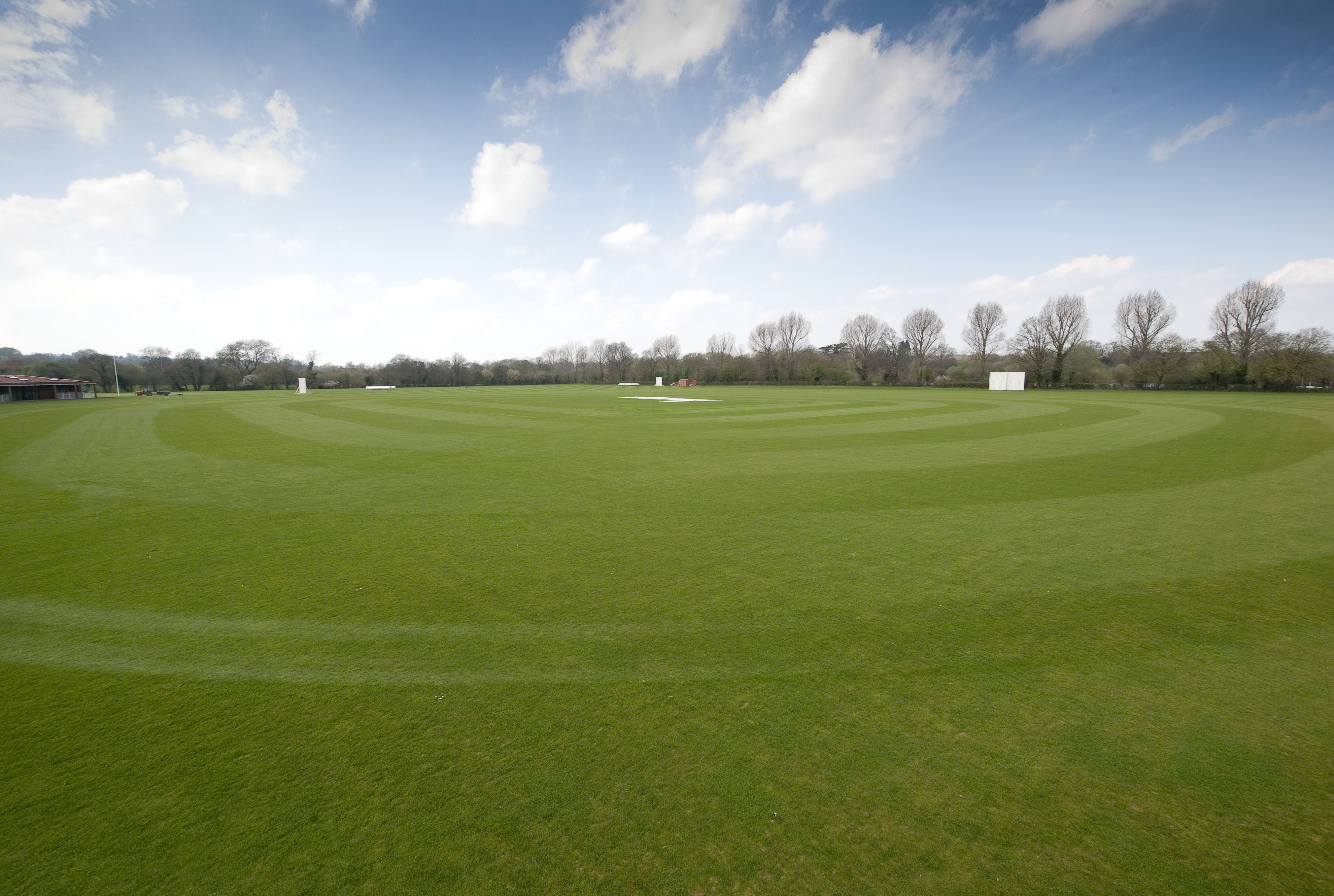Relevant laws and guidance
The boundary of the field of play is defined in Law 19. It is determined before the toss and fixed for the duration of the match.
Safety margins
Please note Law 19.1.2: ‘The boundary shall be determined such that no part of any sight-screen will, at any stage of the match, be within the field of play.’
In addition to the Laws of the Game, the ECB recommends that a safety margin of at least three yards (2.74 m) beyond the boundary should be maintained. This safety zone should be clear of any hard or injurious material/object (for example seating, sight screens, advertising boards, fencing etc) or any significant change of slope or ground condition that could cause a player injury whilst they are fielding near to or beyond the boundary.
Setting this safety margin is really important because players can approach boundaries at a pace and body position that means that they need this safe zone to decelerate safely. The safety margin should take precedence over boundary dimensions – it is better to have a shorter boundary than unsafe objects within the safety margin.
Boundary dimensions
Minimum and maximum boundary dimensions are normally defined in the competition playing conditions – so check your league handbook, ground regulations and/or website.
Dimensions for newly constructed grounds should be a boundary of 50 yards (45.72 m) plus the 3 yard (2.74 m ) safety margin. In this case, this is measured from the middle stump of each pitch used for open-age cricket.
Where is the boundary measured from?
Check your playing regulations carefully as some regulations measure from the centre of the pitch, others from middle stump at each end.
Marking the boundary
See Law 19.2 and your competition playing conditions for requirements on how the boundary should be marked.
The three most common methods used for marking the boundary are:
|
Method |
Pros |
Cons |
|
Rope |
|
|
|
White line |
|
|
|
Flags or marker boards |
|
|
Tips if you are using a rope:
- Cricket Boundary Ropes are typically available in 4 diameters (20mm, 24mm, 28mm & 32mm). Larger diameters are more visible and stronger but are also heavier and need more storage room.
- It is common to use two ropes and have two overlap points to make movement and storage easier.
- Better-quality rope is made from tough, durable, ‘rot free’ and UV stabilised 3-strand white polypropylene rope. This type is the most durable when left out in all weathers. There are cheaper types of rope available, but a lower quality rope will rot and discolour quickly. A boundary rope is an investment, always consider all the different options that are available.
- Try to align one of the overlaps near to the grounds machinery access that can be lifted to allow the roller to the square.
Tips if you are using a painted white line:
- Always use proprietary line marking paints.
- Do not mix in herbicide or plant growth regulator when painting lines:
- It is often illegal to mix plant protection products for this reason.
- You do not want to permanently mark a boundary by killing or slowing grass growth because you will need to move the boundary when you change pitches.
- Always clean your boundary marking machine and maintain in good working order as per the manufacturer’s instructions.
- Always store paint and clean up any spills in line with the paint manufacturer’s instructions.
- It is often necessary to use markers such as flags placed at the back of the boundary (outside edge) to help players and umpires to locate the boundary.
Tips if you are using flags/markers:
- Do not let the gaps between flags / markers get too big – aim for one every 10 metres approx.
- Always replace any damaged markers or markers with sharp parts that could cause puncture injuries.


 Tweet
Tweet